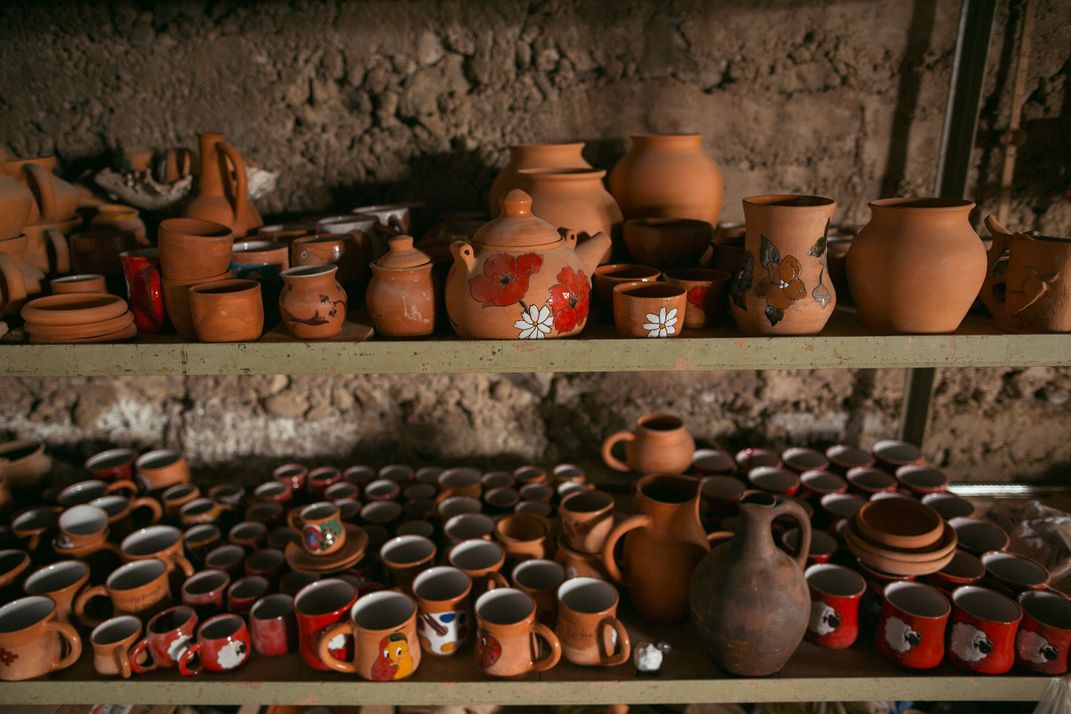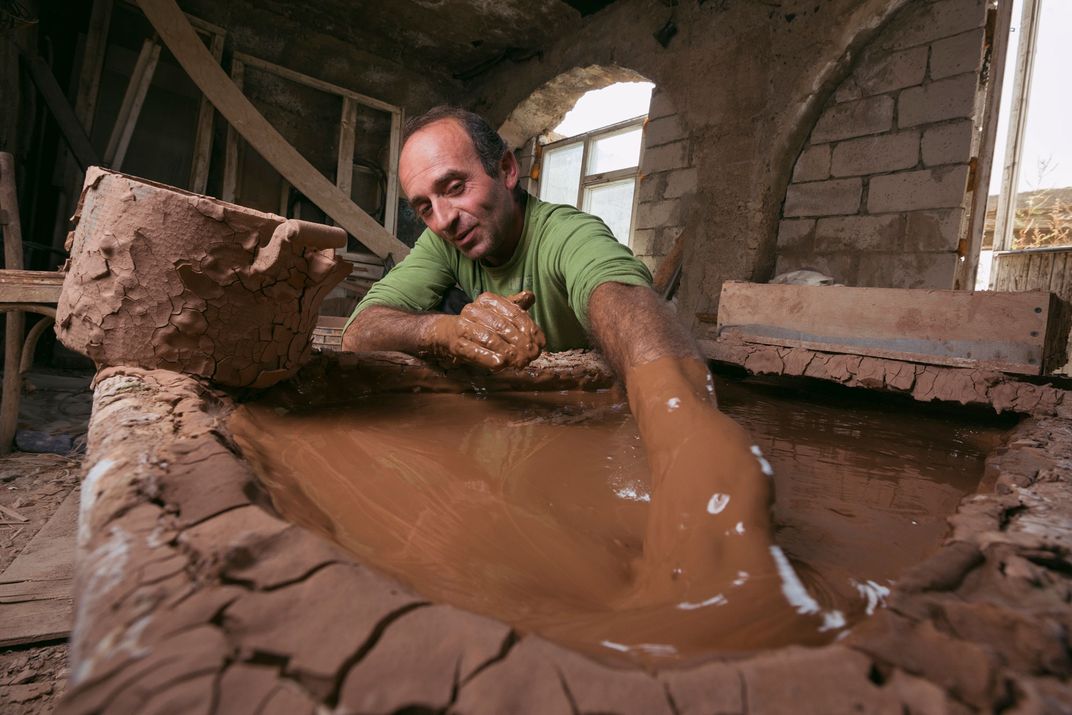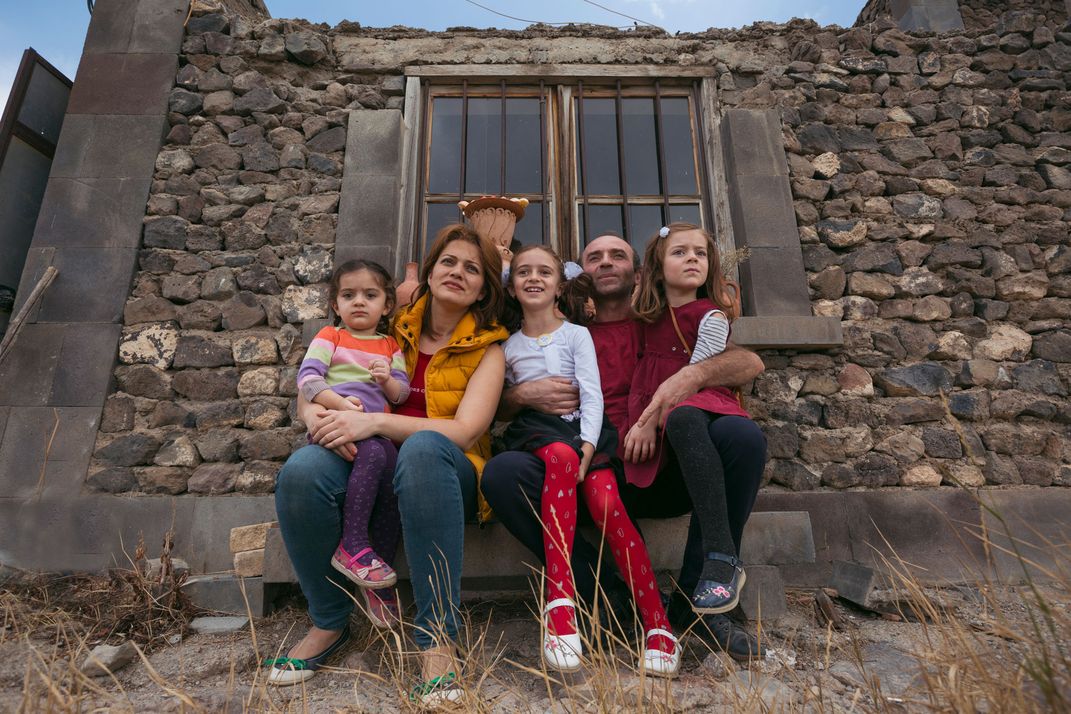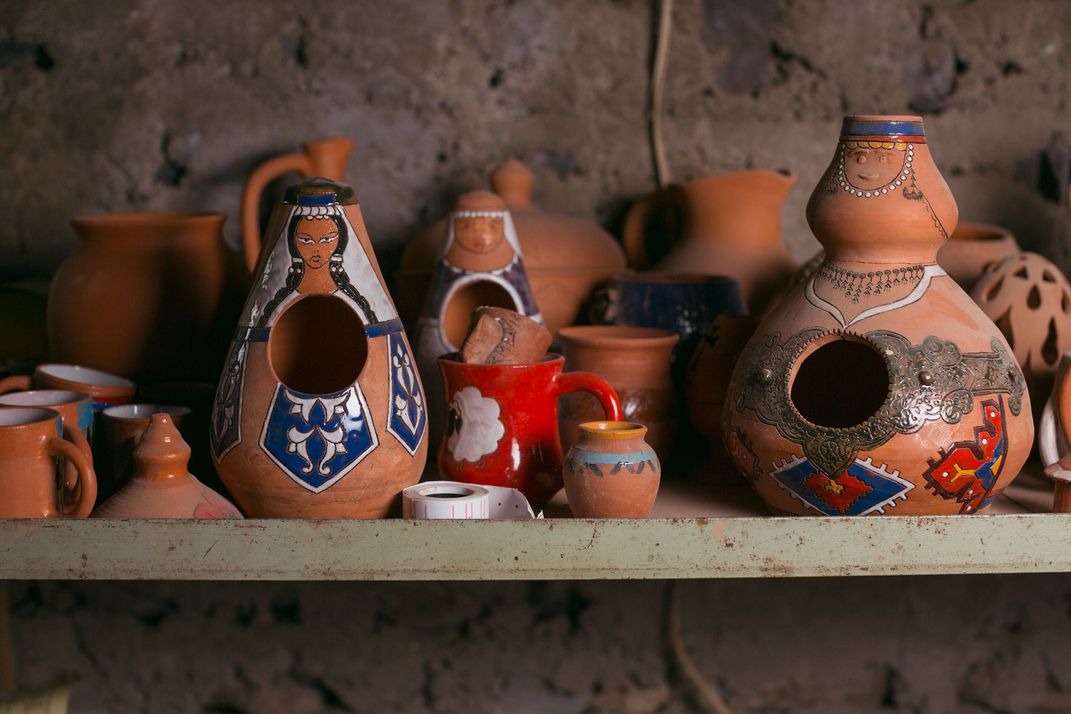SMITHSONIAN CENTER FOR FOLKLIFE & CULTURAL HERITAGE
The Potter’s Wheel: An Inexhaustible Source of Energy
Master potter Vahagn Hambardzumyan is among those who carry on Syunik, Armenia’s rich pottery traditions with a modern touch.
/https://tf-cmsv2-smithsonianmag-media.s3.amazonaws.com/blogging/featured/Vahagn-working-on-a-clay-jug.jpg)
In the summer of 2020, the Center for Folklife and Cultural Heritage’s My Armenia Program partnered with Armenian publication Yerevan Magazine to publish a special issue highlighting community-based cultural heritage tourism in the country. Over the next few months, the Center will publish English translations of the articles to Smithsonian Voices.
During this difficult time in the region, we hope these stories shine a light on the resilience of the Armenian people by showcasing their vibrant, diverse cultural heritage.
There is no lack of interesting places and phenomena in Syunik, the southern region of Armenia, and there is always something new to discover. The region has had rich traditions of pottery, which continue to this day. Master Vahagn Hambardzumyan, whose workshop in Sisian can be visited by tourists, is among those who carry on these traditions with a modern touch. Curator and the My Armenia Program’s Senior Museum Specialist Nairi Khatchadourian had a conversation with the master about the past, present, and future of his craft.
You practice one of the oldest crafts in the world and in human history. Do you feel any kind of responsibility in continuing this tradition?
Of course, and not only the responsibility to continue it, but also to develop and restore the things that have not survived to today. Our nation is rich in ceramic crafts that are samples of highly refined art. Unfortunately, many examples of prehistoric pottery have been neglected. My objective is to revive them with a modern aesthetic, function, and techniques.

The ancient ceramic products were clay objects (jugs or vessels) or clay statuettes. However, you create only clay objects. Why?
I was also good at creating sculpture, but I took a deep interest in the ancient local techniques and methods of pottery. I could not find detailed professional studies about them (especially about the methods employed and the interpretation of patterns) in any sources. Yet, the pottery masters of ancient times—the descendants of Hayk, four-five-six thousand years ago, had already been doing everything that modern-day people started doing only at the beginning of the 20th century. What they were doing was combining the functional and the beautiful. When I study the works of ancient times, I have a pleasant tingling sensation. There is such a deep perception of the material, these works attest to such good taste, and there is so much love, respect, and mastery in them. These are the reasons I became obsessed with them. They take me to a world that is entered only through the depths of millennia.
Do you remember when you first tried your skills in using the potter’s wheel?
My first attempt was made secretly. I don’t know why I thought that people in my workplace at that time would object to me working with the potter’s wheel. The result of my first attempt was a small cup-like object. Magic happened at that moment. I realized that it was the boundary line between curiosity and love. It sent shivers down my spine. Joy and fear were intertwined, like when a teenager in love wants to confess to his beloved girl but is afraid that it will not work. Then I realized that nothing could stop me, and that very day I initiated the construction of my first potter’s wheel. The wheel is an inexhaustible source of energy to me. I think that the work on the potter’s wheel resembles the cycle of life. The wheel is spinning, and the work is created. Then the refinement activities are carried out by hand. The piece is first refined when it is still wet; after it has been hardened, the second refinement is carried out after it has been hardened more; and the third one after it has dried. Afterwards, it is placed in the oven. The piece is baked at the respective temperature, which is determined based on the thickness of the given work. When it is taken out of the oven, it undergoes one or several stages of processing in accordance with the peculiarities of the given work. It may also be glazed and put back into the oven once more. Some other processing activities may also be required.

You also conduct research on the ceramic traditions of the past.
Saying that my works are related to ancient traditions would be saying very little about them. They are not merely related to these traditions. Ancient ceramic traditions form the foundation of my works, and I try to construct the creative, as well as the technical and technological, aspects of my work based on these ancient traditions. Yes, I have explored our cultural heritage a lot and I continue to explore. I consider that the ancient Armenian traditions are connected with my work as much as I am connected with my parents, or my children are connected with me or with their grandparents. Let us imagine a tree without roots or with weak roots and another one with a strong system of roots. We do have that strong system of roots. That is why it is necessary to build on that system and to foster that system further, as there is a new root for each new branch growing on that tree, and the root matches the branch so that it can feed on the root. I think it is right to feed on our root system, and to foster it at the same time.
How has your career evolved after you started conducting pottery workshops as a kind of tourism experience?
When we decided to receive tourists at our place, it changed somewhat the atmosphere of our workshop. We used to work only for us and for the client, but after this change there was a need to acquire new skills as it was necessary to present an element of our culture to foreigners and maybe even to people who are more informed about the subject. Therefore, a need arose to revisit relevant information and to look through literature in order to best present our culture to tourists. We also set the objective to renovate the workshop space. The question of serving food for familiarizing our guests with Armenian cuisine arose from the demand for it, and then it all started.

What is the significance of introducing this artisanal tradition to local and foreign tourists? What responses do you usually receive from people?
Artisanship has wonderful traditions, and it is highly important to introduce them to foreign tourists. We consider tourism to be similar to a cultural dialogue. Therefore, we should avail ourselves of the opportunity to engage in a cultural discourse and to present our culture in the best way possible. In this way, we contribute to increasing awareness of Armenia through culture, and consequently to strengthening it. The responses are very diverse and all of them are positive. Regarding domestic tourists, I want to say that it is interesting with them, especially when they want to learn and get acquainted with the symbols of the ancient times of their history.
Where would you recommend people to study important samples of Armenian pottery?
The Sisian History Museum features a multitude of wonderful works dating back to different periods. I am particularly fond of a ceremonial vessel with a pattern resembling the horn of a ram. The vessel was discovered from the Zorats Karer archaeological site (also known as Karahunj or Carahunge). There are also wonderful salt containers and a variety of ceremonial and everyday vessels, the study of which gives an idea about our culture.

Sisian History Museum named after Nikoghayos Adonts
The Sisian History Museum was founded in 1989 as a branch of the History Museum of Armenia, and in 1993 it received the status of an independent museum. The museum is located in a building built in 1937. Only those cultural assets, which represent the Sisian region, are kept in the museum's collection, which consists of archeological and ethnographic materials. Visitors can see artifacts excavated from the Zorats Karer archaeological site, villages of Aghitu and Lor, and different districts of Sisian. The ethnographic collection features the region's rug-making, crafts, and national costumes. The museum also has a rich collection of ceramic objects dating to different periods.
Sisian Ceramics
Sisian Ceramics can be visited at 42 Gr. Lusavorich St., Sisian, Syunik.
